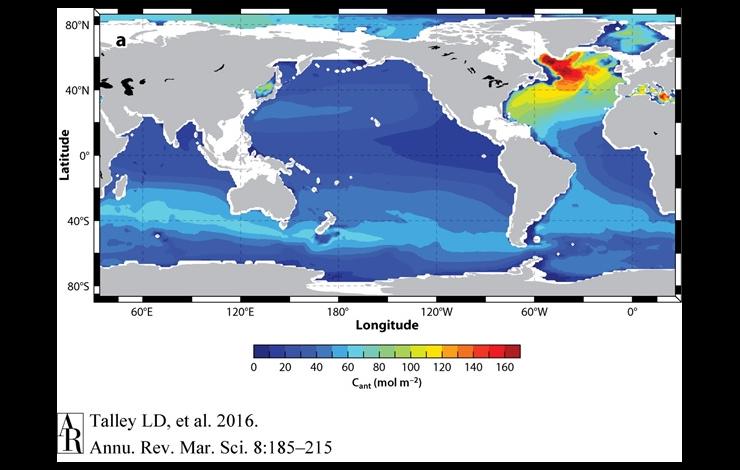NOAA scientists and collaborators have just published a review article in Annual Review of Marine Science that summarizes our GO-SHIP repeat hydrography efforts conducted since the early 1990’s across the global oceans. The article found that the ocean is taking up a large fraction of the carbon dioxide and most of the excess heat caused by fossil-fuel burning and land use changes. Roughly 27% of the carbon dioxide released into the atmosphere by human activities is stored in the ocean, which in turn lowers the pH in the upper ocean. The ocean is taking up most of Earth's excess anthropogenic heat, with about 19% of this excess in the deep ocean beneath 2,000 m, dominated by Southern Ocean deep-ocean warming. The global hydrography has mapped dissolved organic carbon, a large, bioactive reservoir, for the first time and quantified its contribution to export production (∼20%) and deep-ocean oxygen utilization.
Read the abstract and article in Annual Review of Marine Science and learn more about the NOAA PMEL Carbon Program.



